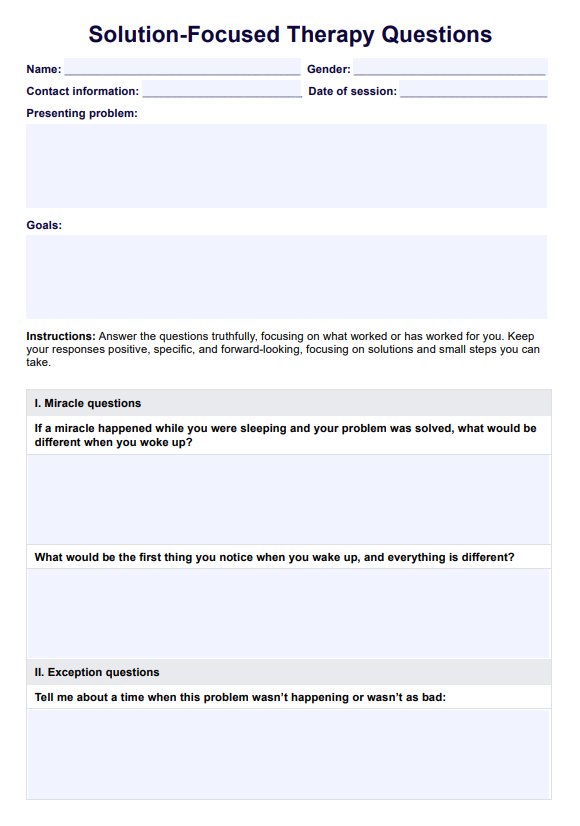solution-focused therapy (SFT) is distinct in its brief, goal-directed nature. Unlike models that delve into past experiences and problems, SFT concentrates on what clients want to achieve in the future, highlighting the strengths and resources they already have to solve their issues.

Solution-Focused Therapy Questions
Find a handy guide when working with clients in exploring their goals and solutions with our helpful list of solution-focused therapy questions.
Solution-Focused Therapy Questions Template
Commonly asked questions
Common techniques include the miracle questions, scaling questions, identifying exceptions (when the problem does not occur), and building on past successes to encourage progress and solution-building. Therapy worksheets can also be used as tools alongside these methods to help clients visualize their goals, track progress, and engage with the therapeutic process outside of sessions.
Solution-focused therapy (SFT) is known for being a brief form of therapy, often requiring fewer sessions than traditional therapy. The length of the therapy depends on the client's goals and progress but typically ranges from five to eight sessions.
EHR and practice management software
Get started for free
*No credit card required
Free
$0/usd
Unlimited clients
Telehealth
1GB of storage
Client portal text
Automated billing and online payments











